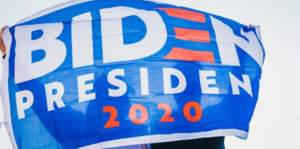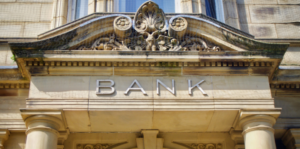The very notion of Public Service Loan Forgiveness (PSLF) is noble: you graduate and start working in the public or nonprofit sector, usually in a low-paying job. You make 120 qualifying payments — income-driven monthly payments for 10 years — and the remaining balance on your student loans is forgiven.
In theory, PSLF sounds like a great program for teachers, police officers, government workers and other similar positions in public service. But in practice, PSLF isn’t doing what it was designed to do. Here’s how to qualify, apply for forgiveness, and what you need to know about the PSLF process as it currently stands.
How do you qualify for public student loan forgiveness?
There are a few major factors that put you on the PSLF track, including:
- Working full-time for a government agency or certain nonprofit organizations
- Having Direct Loans (either individual loans or a Direct Consolidation Loan)
- Repaying your loans through an income-driven repayment (IDR) plan and making 120 qualifying payments
PSLF doesn’t concentrate on your job itself — instead, it focuses on your employer. Government agencies at all levels and 501(c)3 nonprofits are eligible for PSLF. Some other types of nonprofits may qualify, but labor unions and partisan political organizations aren’t eligible.
Full-time work is generally classified as 30 hours a week or more — or whatever meets the full-time criteria at your job. If you aren’t a full-time worker, you may still qualify for PSLF if you work two qualifying jobs at the same time for a total of 30 hours a week or more.
You will need to enroll in an income-driven repayment plan, such as Income-Based Repayment or Pay As You Earn (PAYE), before you enter into PSLF. Since the Standard Repayment Plan expects you to pay your loans back after 10 years, you wouldn’t have a balance to be forgiven if you stay on that plan. Under an IDR plan, you’re expected to make payments for 20 or 25 years, depending on the plan you choose. The remaining balance is then forgiven after 20 or 25 years.
Because of this, you’ll want to start an IDR as soon as possible so you can enroll in Public Service Loan Forgiveness. This will minimize your loan payments and maximize the amount that is forgiven.

Introducing
The Aunt Betty Fund
Family and Friends can easily send payments to reduce the burden of debt — directly to the loan servicer.
Donors can support grant programs helping borrowers who are struggling with their payments
Grants offer those with demonstrated financial need an opportunity to get help with their loans.
How to apply for forgiveness
Making 120 qualifying payments means you can expect forgiveness as early as 10 years after graduation. The longer you wait to get on an IDR plan, the longer it’ll take you to have your loans forgiven.
As you’re working towards PSLF, you’ll need to complete the Employment Certification for Public Service Loan Forgiveness form every year (and whenever you change employers).
When it’s time to apply for PSLF, you’ll need to download and complete a PSLF application form. You’ll mail this and the Employment Verification Form to the U.S. Department of Education at the following address:
FedLoan Servicing
P.O. Box 69184
Harrisburg, PA 17106-9184
The Department of Education uses your Employment Verification Form to make sure you’re on the right track for PSLF. Completing these forms will ensure you’re doing everything you can to earn PSLF long before you submit your application for it. If you only submit a PSLF application when the time comes, it may not be granted.
Keep in mind that even if you think you qualify for PSLF and you apply, you’re not guaranteed to receive it.
Is Public Service Loan Forgiveness a good idea?
The program began in 2007, so the first batch of borrowers were eligible for forgiveness in 2017. As of March 2019, 86,006 PSLF applications have been submitted but only 864 applications have been approved. That’s 1% of applicants.
The number one reason applications get denied is because the applicant doesn’t have qualifying payments. Some borrowers have spent years believing they were on the right track and when the time came to receive forgiveness, they didn’t get it. Thousands of applicants have tried to get PSLF and 99% have failed.
In theory, PSLF is a great idea, but in practice, it has not been granted for the majority of applicants. Given the high rate of denials to date, potential PSLF applicants may be better off searching for relief elsewhere.
Public Service Loan Forgiveness alternatives
Even if you think you qualify for PSLF, you may not get approved. Luckily, there are other ways to get some relief:
Temporary Expanded Public Service Loan Forgiveness
To qualify for Temporary Expanded Public Service Loan Forgiveness (TEPSLF), you’ll need to:
- Have already applied for PSLF and been denied because some or all of your payments didn’t qualify for PSLF
- Been employed at least 10 years by a qualifying employer, like those mentioned for PSLF
- Made 120 qualifying payments under the new TEPSLF requirements. The amount you paid 12 months prior to applying and the last payment you make before applying must be at least as much as you would have paid under an IDR plan
You can still submit a TEPSLF form even if your PSLF application hasn’t been officially denied yet.
Income-Driven Repayment plans
You need to be on an IDR plan to qualify for Public Service Loan Forgiveness, and all IDR plans will forgive your balance after 20 or 25 years of repaying, depending on the plan you choose. While it’s not as fast as you would’ve preferred through PSLF — 10 years — it may still provide relief.
But you only start your track for forgiveness when you start your IDR plan. The sooner you get on this track, the sooner you can count down to forgiveness.
Student loan refinancing
While refinancing your student loans still requires you to make payments, doing so could potentially lower how much you’ll end up paying.
If you have a solid credit score, you could refinance your student loans to get a lower interest rate. Paying less in interest means you’ll pay less money over the life of your loan. However, refinancing doesn’t guarantee a lower interest rate, and not everyone qualifies for refinancing. If you don’t have stellar credit, refinancing may not be worth it.
Keep in mind that once you refinance, you give up any federal loan benefits you have. For instance, you will no longer have access to federal deferment or forbearance programs, and your loans will no longer be eligible for Income-Driven Repayment plans.
Before refinancing, make sure you’re prepared to take on the responsibilities of a new loan. While it can be a great tool to save money, it doesn’t work for everyone. If you want to check out the interest rates you could get by refinancing, you can see estimates from multiple lenders using Purefy’s rate comparison tool.















